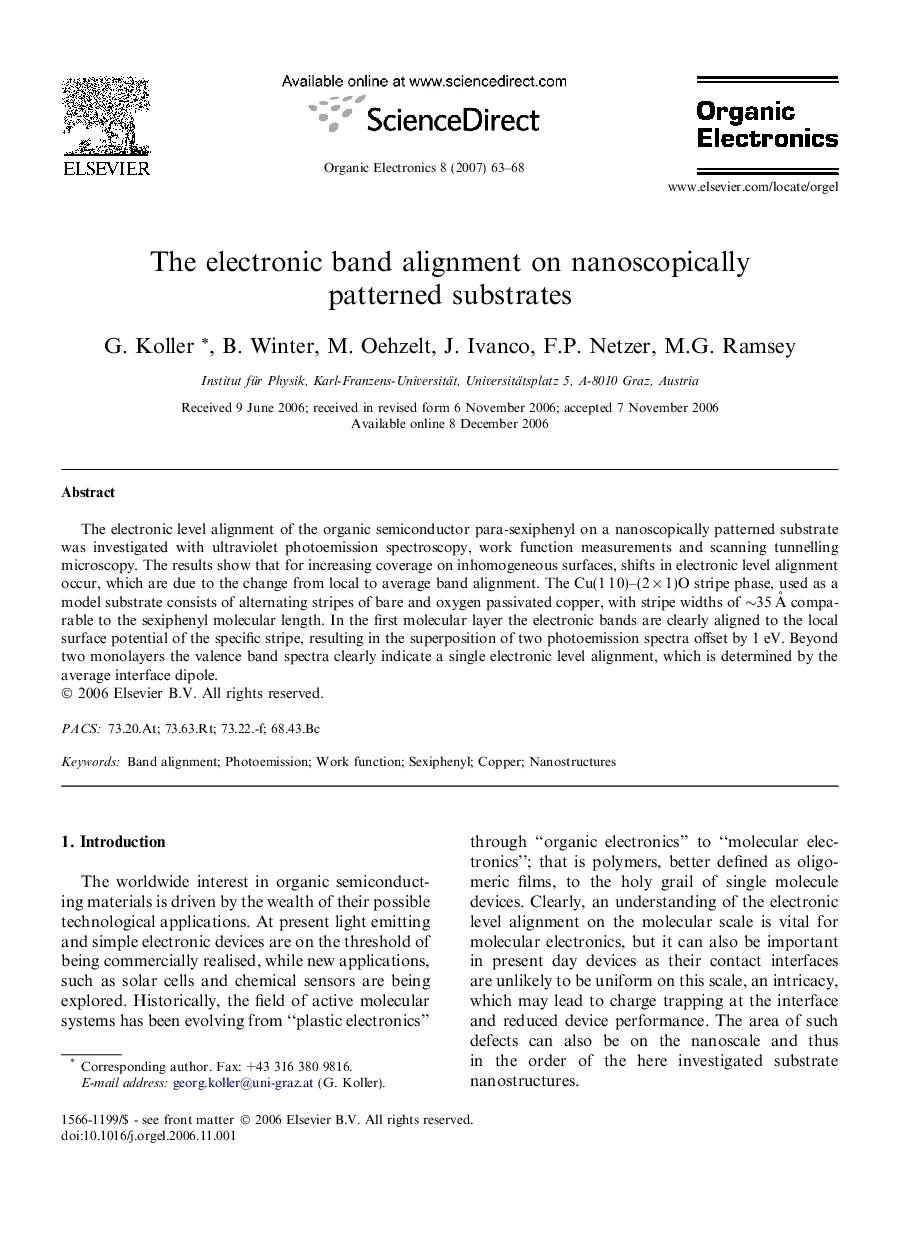| Article ID | Journal | Published Year | Pages | File Type |
|---|---|---|---|---|
| 1264484 | Organic Electronics | 2007 | 6 Pages |
The electronic level alignment of the organic semiconductor para-sexiphenyl on a nanoscopically patterned substrate was investigated with ultraviolet photoemission spectroscopy, work function measurements and scanning tunnelling microscopy. The results show that for increasing coverage on inhomogeneous surfaces, shifts in electronic level alignment occur, which are due to the change from local to average band alignment. The Cu(1 1 0)–(2 × 1)O stripe phase, used as a model substrate consists of alternating stripes of bare and oxygen passivated copper, with stripe widths of ∼35 Å comparable to the sexiphenyl molecular length. In the first molecular layer the electronic bands are clearly aligned to the local surface potential of the specific stripe, resulting in the superposition of two photoemission spectra offset by 1 eV. Beyond two monolayers the valence band spectra clearly indicate a single electronic level alignment, which is determined by the average interface dipole.
